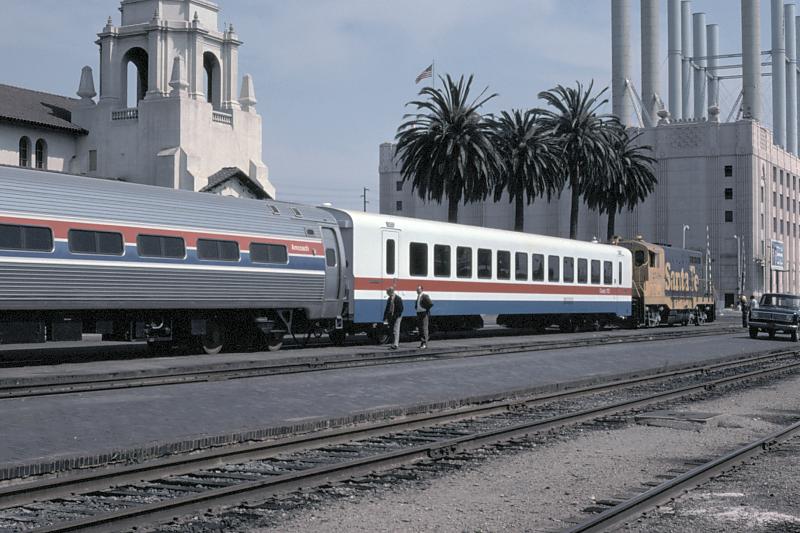The Europeans call this "Hook and Screw" as the handle spins a screw to tighten up the link over the hook. The point of tightening was to have the buffers in compression to some extent.
This form of coupling is a minimally improved Link and Pin, in that it does not need the pins and the link is captive so you can't lose one. There are two major problems with this form of coupling:
1. In case of sudden compression, that is run in of slack in American terms, the link can pop off the hook, so you can have surprise uncouplings.
2. You have get between the car ends to hook the link over the hook, and also to take the link off the hook. A couping that requires a person to get between the cars to couple and uncouple cars was outlawed in the US by the Railway Safety Appliance Act of 1895 (or 1893, I have see both dates in writing.)
Europeans call it "Hook and screw"? Hmmm, 29 years on a railway
and speaking English and I have never heard that term, pretty sure the French or Germans wouldn't use that term, as funnily enough English is not generally used in everyday communication!
Screw coupling, yes. Drawhook, yes. Collectively the 'coupling; or 'shackle'.
The compression is not provided by tightening up the screw thread, as that would be hard work, the buffers are compressed when the loco is moved up to the train, and when the brakes are released the coupling will tighten up. Normally you would leave the last 3 threads exposed, so as not to over tighten.
Never ever heard of a screw coupling popping of the shackle, would think it was very rare, yes the old 3 link coupling could do that, but not a screw coupling. Granted, sometimes the screw coupling would break, but even the couplings used in the US break, or do you think they don't?
As for getting between the vehicles, it is safer to use buckeye or knuckle couplers, but how do the air lines, head end supply and train control jumpers get connected? By magic fairies? Or by someone getting between the vehicles?





